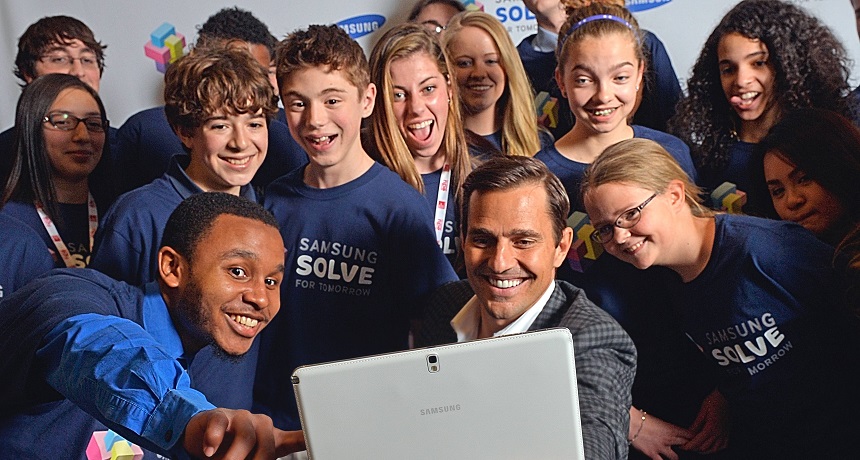Teachers: Deadline looms for solve-it program
Applications for a contest to design innovative solutions to community problems are due by October 31

The 2013 Samsung Solve for Tomorrow finalists pose for a selfie with Bill Rancic, the first winner of “The Apprentice” at SXSWedu.
Samsung